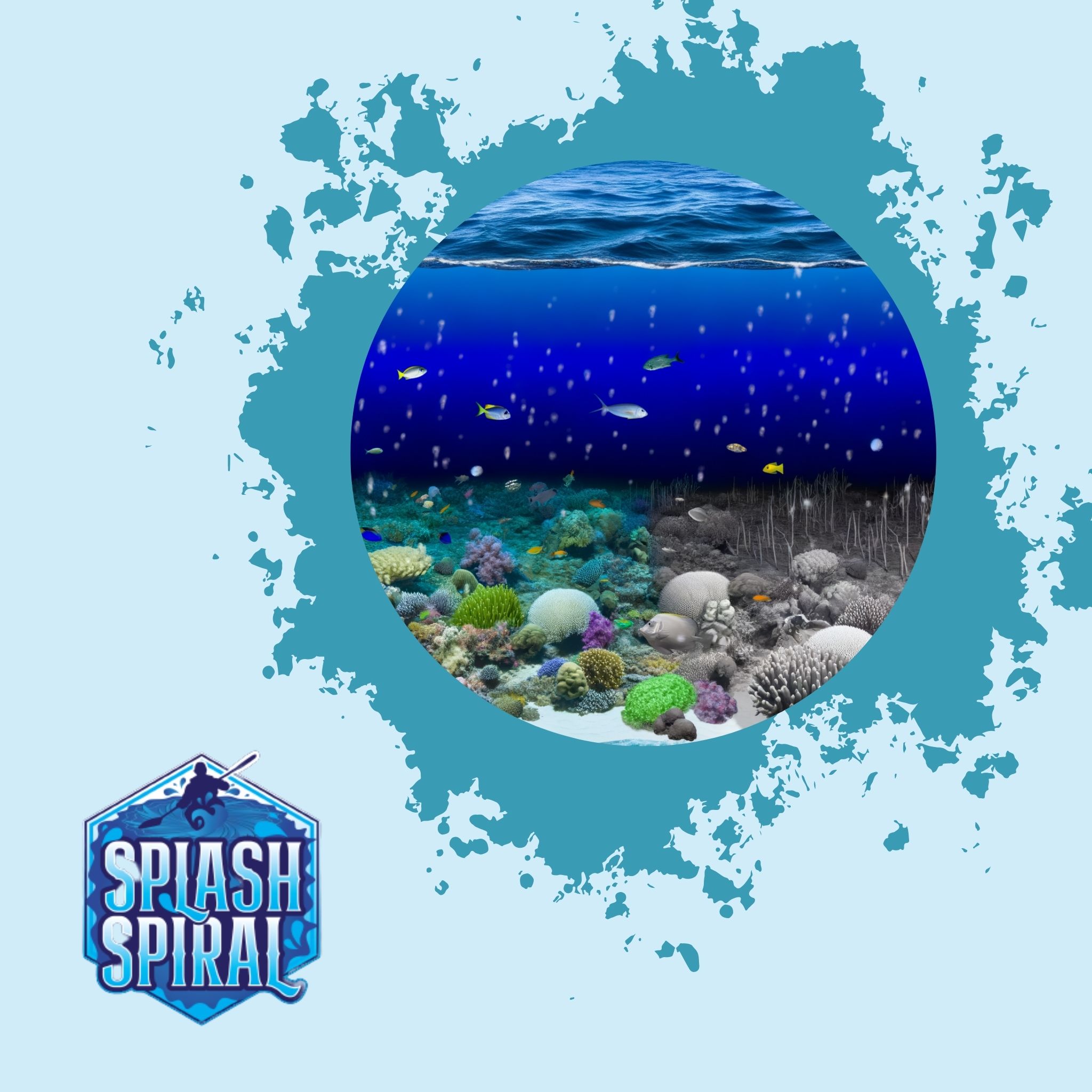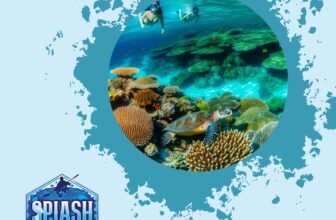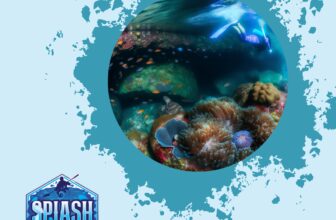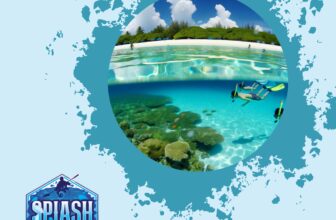
Understanding the complex nature of our oceans is crucial, especially as environmental changes are beginning to show significant impacts on marine ecosystems. One such troubling trend is ocean deoxygenation, which affects marine life more than most of us realize. This guide aims to provide beginner divers and marine enthusiasts with a clear, straightforward look at the causes and consequences of ocean deoxygenation so they can appreciate the gravity of this environmental issue.
Introduction
Picture this: you’re diving into the crystal-clear ocean, marveling at the vibrant marine life around you. But beneath the surface lies a problem that's less visible but just as crucial—ocean deoxygenation.
What is Ocean Deoxygenation?
Ocean deoxygenation refers to the reduction of oxygen levels in the ocean. Much like on land, marine life relies on oxygen to survive and flourish. When oxygen levels drop, entire ecosystems can be thrown off balance, leading to dire consequences for the creatures that inhabit these waters.
Why Should You Care?
Oxygen is the lifeline of marine ecosystems:
- Essential for Marine Life: Fish, corals, and even tiny plankton need it to thrive.
- Ecosystem Impact: Without adequate oxygen, these organisms face immense stress, struggle to reproduce, and in the worst cases, die off. This disruption impacts entire food webs.
The Impact on Divers
As a beginner diver or an aspiring one, understanding ocean deoxygenation can enhance your underwater experience:
- Enhanced Understanding: Knowing about this issue adds depth to your appreciation of marine life.
- Responsible Enthusiasm: This knowledge makes every dive not just an adventure, but also a step towards becoming a more informed and responsible marine enthusiast.
Causes of Ocean Deoxygenation
Natural Causes
Nature itself holds some cards when it comes to deoxygenation. While not nearly as alarming as human impacts, these natural processes are part of the complex dance of ocean dynamics.
Water Temperature Variations
Water temperature plays a vital role. Warm water can’t hold as much dissolved oxygen as cold water. Think of it like soda going flat faster in the sun—when water heats up, its oxygen-holding capacity drops. Seasonal changes and long-term climate patterns, including phenomena like El Niño, can also lead to shifts in water temperature, triggering deoxygenation in certain areas.
Ocean Current Changes
Ocean currents transport oxygen-rich water across the globe, nourishing marine habitats. When these currents undergo changes, whether due to natural cycles or disruptions, it can lead to decreased oxygen levels in some regions. For instance, shifts in currents can bring nutrient-rich but oxygen-poor waters to the surface, creating zones with diminished oxygen concentration, often called 'oxygen minimum zones.'
Human-Induced Causes
Unfortunately, human activities are tipping the scales and accelerating ocean deoxygenation faster than nature ever did. Here’s how our actions are taking a toll:
Agricultural Runoff Leading to Eutrophication
Agricultural runoff loaded with fertilizers and waste can cause eutrophication. This process fuels massive algae blooms which, when they die, get decomposed by bacteria. The bacterial decomposition consumes large amounts of oxygen, leaving little for other marine life. It’s like throwing a massive party and then leaving the ocean to clean up afterward, only there aren’t enough hands (or gills) to manage it.
Effect of Fossil Fuel Combustion and Climate Change
Burning fossil fuels not only pumps carbon dioxide into the air but also contributes significantly to global warming. Warmer oceans, as mentioned earlier, hold less dissolved oxygen. Additionally, increased carbon dioxide levels lead to ocean acidification, which complicates things even further for marine life trying to survive in low oxygen conditions.
Role of Overfishing and Habitat Destruction
Overfishing disrupts food webs and can lead to the collapse of local ecosystems. Habitat destruction, whether through coastal development or destructive fishing practices like trawling, also reduces the resilience of marine ecosystems, making them more vulnerable to deoxygenation. Habitat loss means fewer safe havens for species struggling to find oxygen-rich environments.
Link to Other Environmental Concerns
Lastly, ocean deoxygenation doesn’t exist in a vacuum. It’s intertwined with other pressing environmental issues. For example, deep-sea mining, which disturbs ancient, oxygen-poor layers of the ocean, can exacerbate deoxygenation. To learn more about the concerning impacts of deep-sea mining, check out this link.
Understanding these causes is the first step in addressing the problem. As beginner divers and marine enthusiasts, having this knowledge equips you to recognize the signs and advocate for the ocean’s health in meaningful ways.
Effects of Ocean Deoxygenation on Marine Life
Immediate Effects
Imagine you're a fish, cruising along your usual underwater route. Suddenly, you find yourself gasping for oxygen. That's the reality for many marine organisms when deoxygenation hits their habitat. When oxygen levels plummet, marine life responds almost immediately. Fish and invertebrates show signs of stress, which can be as subtle as sluggish movements or as severe as outright suffocation.
Organisms with low tolerance to oxygen fluctuations, like many bottom-dwelling species, are hit the hardest. These critters often inhabit areas where oxygen levels are naturally lower, so any further drop can spell disaster. If the oxygen drops too low, these species either have to move to more hospitable waters or face the grim prospect of mass die-offs.
Long-Term Consequences
Over time, the repercussions of deoxygenation weave a more complex and nefarious web. Species that can't adapt or migrate will dwindle, leading to a significant shift in species distribution. Some fish might move to shallower waters, while other species might vanish entirely from certain regions. This shake-up in marine communities disrupts the intricate balance of marine ecosystems.
As certain species become less prevalent or disappear, biodiversity takes a hit. A less diverse ocean isn't just a loss for marine life—it also weakens the resilience of marine ecosystems, making them more vulnerable to other environmental stressors. This cascade effect can disrupt entire food webs. Predators might find their prey scarce, while herbivores could overgraze on algae and seagrass, altering the habitat structure and quality.
These changes are not just numbers on a chart; they're tangible shifts that impact the very foundation of marine environments. The decline in species can lead to fewer opportunities for snorkeling and diving enthusiasts to witness diverse marine life, altering the underwater landscapes we so dearly love to explore.
For beginner divers, it's crucial to grasp these ripple effects. As you dive into these underwater realms, you'll begin to see firsthand how vital it is to protect the ocean's delicate oxygen balance. By understanding both immediate and long-term impacts, divers can become better stewards of the underwater world, advocating for healthier oceans that teem with life.
Diver Observations and Real-World Examples
For beginners dipping their toes into the underwater world, noticing the effects of ocean deoxygenation can be quite eye-opening. Many seasoned divers report striking changes that have occurred over the years. Take, for example, the once-vibrant coral reefs off the coast of Australia. Divers who frequent these waters have noted how patches of reef that were once teeming with colorful fish and a variety of invertebrates now show signs of stress: fewer fish, bleached corals, and a noticeable drop in overall marine activity.
One notable example comes from the Gulf of Mexico's "Dead Zone," an area worst hit by low oxygen levels each year. Here, divers have seen firsthand the stark difference in marine life. In highly deoxygenated zones, dead fish and other marine animals can be found floating on the surface, or washed ashore. The few species that are able to survive in such conditions tend to be invasive species that thrive in low-oxygen environments, pushing out native marine life and further disrupting local ecosystems.
Another observation comes from divers exploring the Baltic Sea, which suffers from extensive hypoxic zones. These explorers often report diving into what's described as an "underwater desert." Once-thriving seabeds are now lifeless plains, with only the hardiest of organisms hanging on to the depleted environment.
These real-world examples help illustrate that ocean deoxygenation isn't just a distant, abstract concept but a frightening reality that can drastically alter marine environments. For those just beginning their diving adventures, these stories serve as a stark reminder of what stands to be lost, encouraging mindfulness and support for conservation efforts.
Marine Life Stress and Behavior Changes
You might wonder how a reduction in the ocean's oxygen levels could stress marine life. Well, it’s not much different from us feeling queasy in an airtight room. Many marine species depend heavily on a steady supply of dissolved oxygen for basic survival. When oxygen levels drop, fish and other sea creatures start showing signs of stress, which significantly disrupts their usual behaviors and even their health.
Take fish, for instance. When faced with low oxygen levels, their first instinct is to move toward the surface, where oxygen levels can be a bit higher. This “gasping” behavior, where fish cluster near the water's surface, is a self-preservation tactic. Unfortunately, it makes them easy prey for predators. This behavioral shift can disrupt the local ecosystem balance, leading to cascading effects throughout the food chain.
Reproductive patterns also take a hit. Many marine organisms, like tropical fish and mollusks, require specific oxygen levels to spawn successfully. Lower oxygen levels can delay or even stop their reproductive processes altogether. This has long-term implications for population sizes and the overall biodiversity of marine habitats.
Special focus should be given to creatures like nudibranchs, a group of colorful sea slugs that are particularly fantastic to spot during dives. Nudibranchs are excellent indicators of environmental stress because of their narrow tolerances. When oxygen levels plummet, these magnificent creatures tend to reduce their activity levels, affecting their feeding, mating, and even their vivid coloration patterns, which are crucial for their survival.
These behavioral and physiological changes aren't just minor inconveniences. For many species, they spell the difference between thriving and struggling to survive. As divers and enthusiasts, understanding these stress signals can help us better appreciate the delicate balance of marine ecosystems and highlight the urgency for conservation efforts.
For more detailed insights on these fascinating creatures, you might check out resources on their diversity, behavior, and conservation status. Knowledge is the first step toward action, and by recognizing the signs of stress in marine life, we can take more informed steps to protect these underwater worlds.
Environmental Impact
Ocean deoxygenation doesn't just mess with marine life; it's also throwing a wrench into the larger environmental gears. First off, it's changing ocean chemistry. Lower oxygen levels mean less marine respiration, altering the delicate balance of ocean nutrients. As deoxygenation progresses, it amplifies issues like ocean acidification, pushing the water's pH balance further off-kilter. Acidic water hampers the ability of organisms, such as corals and shellfish, to build their calcium carbonate structures, putting entire reef ecosystems at risk.
On a bigger scale, deoxygenation can influence global climate patterns. The ocean plays a crucial role in storing carbon dioxide, and lower oxygen levels can disrupt this process, potentially elevating atmospheric CO2 levels. This, in turn, feeds back into the vicious cycle of global warming. Warmer waters have less capacity to hold oxygen, exacerbating deoxygenation even further. It’s a loop that benefits no one, least of all the marine creatures or the divers exploring their habitats.
Lastly, the issue dovetails with other significant environmental concerns. For example, the warming waters associated with climate change also contribute to harmful algal blooms. These blooms thrive in low-oxygen conditions, releasing toxins that can decimate fish populations and even pose health risks to humans. Effectively tackling ocean deoxygenation means more than just saving marine life; it's about addressing a cascade of interconnected environmental challenges.
For beginner divers and ocean newbies, this might seem overwhelming, but understanding these broader impacts can deepen your appreciation for marine conservation. A healthier ocean isn't just about clearer waters for your next dive—it's crucial for the planet's overall health.
Strategies for Mitigating Ocean Deoxygenation
Addressing ocean deoxygenation requires a multi-faceted approach that combines policy, conservation, and individual action. Here, we'll break down what strategies are being employed and how you, as a beginner diver, can contribute to the solution.
Policy and Regulation
Policies and regulations are the backbone of large-scale change. Effective policies aimed at reducing pollution and emissions can significantly decrease the human-induced factors contributing to ocean deoxygenation.
- Reducing Pollution and Emissions: Governments need to enforce stricter controls on industrial waste, reduce agricultural runoff, and promote clean energy solutions.
- International Agreements: Collaborative international efforts, like the Paris Agreement, play a crucial role in setting global standards and goals for reducing greenhouse gases, driving large-scale environmental benefits.
Conservation Efforts
Efforts to conserve marine environments are essential in maintaining the health and resilience of ocean ecosystems.
- Marine Protected Areas (MPAs): MPAs are designated regions where human activity is restricted to protect the marine life and habitats therein. They serve as sanctuaries allowing ecosystems to thrive with minimal human interference.
- Community-Driven Initiatives: Local communities can be powerful agents of change. Examples include coastline clean-ups, local conservation programs, and habitat restoration projects. Community involvement often leads to more sustainable and long-lasting results due to the personal commitment of local individuals.
Personal and Community Actions
You can make a difference on a smaller scale by adopting personal habits and engaging in community activities.
- Reducing Individual Impact:
- Minimize plastic use
- Opt for sustainable products
- Be energy-conscious to help reduce overall pollution
- Diver Involvement in Data Collection and Monitoring:
- Participate in citizen science projects that track marine life health and water quality
- Provide data that organizations often use to study trends and develop conservation strategies
- Spreading Awareness and Education:
- Share what you’ve learned about ocean deoxygenation
- Educate peers and the local community through workshops, social media, or casual conversations to spread awareness about the importance of maintaining marine health
By taking these steps and encouraging others to do the same, we can collectively make a substantial impact. The underwater world offers incredible experiences, and it's our duty to ensure it remains vibrant and full of life for future generations. Whether through supporting policies, engaging in conservation projects, or making sustainable personal choices, every effort counts in combating ocean deoxygenation.
Conclusion
Ocean deoxygenation is more than just a term scientists throw around—it's a real issue with tangible impacts on our marine ecosystems. From natural fluctuations and human-induced effects to broader environmental connections, we've seen how oxygen levels in the ocean play a critical role in the health and balance of marine life.
For those of you just dipping your toes into diving or thinking about it, understanding this phenomenon is vital. It connects deeply with what you will see and experience underwater. Fish struggling to find oxygen-rich areas, shifts in marine populations, and even the biodiversity you cherish can all be influenced by deoxygenation.
So, what's the takeaway? Simple: we all have a role to play. Whether it's supporting policies that cut down pollution, participating in community conservation projects, or even just spreading the word, every bit helps. Remember, as divers, you're not just visitors to the ocean; you're ambassadors. Use your dives to gather data, report your observations, and inspire others.
The journey to healthier seas begins with awareness but moves forward with action. So, gear up, dive in, and be part of the solution. The oceans depend on it, and ultimately, so do we.







